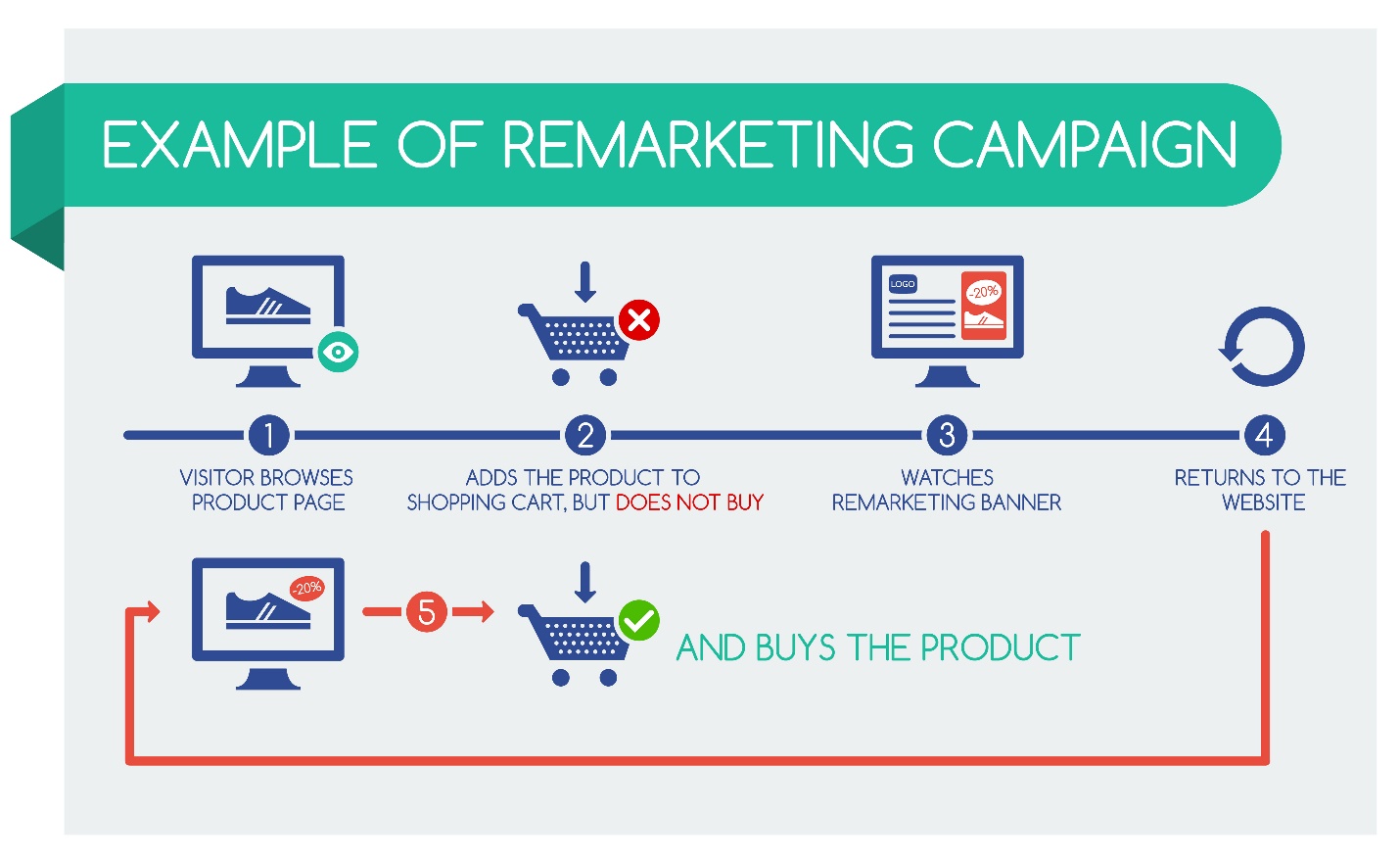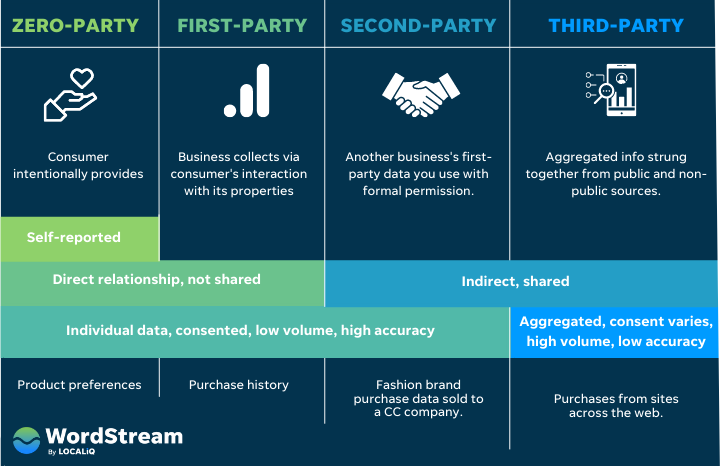What is the Digital Marketing Strategy that Tracks Users Across the Web?
-

Aaron Gray
- Blogs
-
 April 02 , 2024
April 02 , 2024
-
 7 min read
7 min read
ANSWER
Remarketing is a powerful digital marketing strategy that heavily involves constant tracking of user preferences to produce more effective campaigns.
Key Takeaways
- Remarketing focuses on leads with a history of visiting the site but has never taken action. Its content motivates them to re-engage and decide to purchase.
- Cookies used to be the most common way to gather user data. However, they’re falling out of favour due to an increasing demand for data privacy.
- There are several ways to perform data collection without relying on cookies, such as cross-device tracking and zero-party data.
Releasing your campaign to the Web and waiting for good news is no way to perform effective digital marketing strategies. Even with careful planning and prep work, you can’t entirely dismiss the risk of your ad missing the target or yielding underwhelming results. Consumer and market trends can change on a whim, and not keeping up with future trends can jeopardise your digital advertising efforts.
Because of this, advertisers must keep a close eye on user behavior when they click on a paid search ad or video content on social media platforms or other digital media channels. The data gathered from monitoring user engagement and online activities immensely helps with later adjustments to your digital marketing plan to better reach the target audience.
This leads to remarketing, a powerful digital marketing strategy that tracks users’ digital footprint across the Web to boost the campaign’s conversion rates. By analyzing user interactions across various marketing activities, companies can gain valuable insights into what resonates with their audience. Learn the basics of remarketing and how to use it to the fullest for a successful digital marketing plan.
What is Remarketing in Digital Marketing?
Remarketing helps you send specific marketing messages to people who visited your website but didn’t make a purchase, encouraging them to return. These include website visitors who “bounced” (visited but left immediately) or read the site’s content but didn’t purchase anything or sign up for a newsletter, among other digital activities.

At some point after a visitor bounces or leaves, they may come across an ad from the site on the larger Web. The idea is to get them to re-engage and decide to purchase the product or service they’ve shown interest in prior.
Remarketing is different from retargeting, as the latter doesn’t care whether or not the lead has visited the site before. In addition, retargeting is typically focused on paid ads, whereas remarketing works on various digital channels.
How Does Remarketing Work?
Remarketing allows you to deliver targeted marketing messages to website visitors who haven’t converted, reminding them of your brand and enticing them to come back. In the past, remarketing entailed embedding a piece of data called a “cookie” on the user’s web browser upon accessing a page. This cookie sends valuable data back to the business such as other relevant website visits or the products they’ve viewed. It’s also known as a third-party cookie, as a third party, like a domain or ad server, places it.
However, recent events have pushed for the phaseout of third-party cookies. Laws such as the General Data Protection Regulation (GDPR) for European Union member-states (and the U.K., at least in the meantime) grant users to opt-out. Businesses that don’t respect such data protection regulations can face a hefty penalty under the GDPR or similar legislation elsewhere.
Also, some browsers are in the process of phasing out these cookies. Google Chrome, for instance, restricted third-party cookie access for 1% of its users at the start of 2024. It’s expected to finish its implementation by the latter half of this year.

While tracking user activity still requires cookies, remarketing has more or less shifted to harness those placed by analytics tools like Google Analytics. Under the GDPR and similar laws, websites should offer users the option to opt-out if they don’t want to be tracked.
This protection extends to sites using tracking pixels or pixel tags. These are code snippets embedded on a page designed to track user activity. Whether on the surface or buried in the code, these pixels are so small that visitors hardly notice them.
Cross-Device Tracking
One method that does away with cookies is cross-device tracking (CDT) or monitoring user preferences and online behavior on all the devices they use. Sites like Facebook do this by locking most of their content and features behind a “walled garden.” In other words, users have to log in (or, if new, create an account) to access them.
A user’s unique experience is shared across the multiple devices they’re logged into. Even if they used their PC to locate the product they wanted, they could still conduct comparisons or further research at the store using their smartphone or tablet. They could evaluate their options back home if they need more time to decide.
CDT does more than gather crucial numbers; it details a customer’s journey. Knowing the back-and-forth a customer has gone through before buying influences online marketing strategy. Sometimes, it can also track offline activity aside from the visitor’s digital footprint.
Nevertheless, utilizing a cross-device tracking strategy is essential for gathering customer insights, understanding consumer behavior, and creating targeted marketing campaigns. While user tracking can be a powerful tool for personalized marketing efforts, it’s important to be transparent about data collection and user consent.
The most prominent system for performing a cross-device tracking strategy is Google Analytics 4, specifically its User-ID feature. Treating every user’s log-in on one device as a separate user generates a more accurate number of users accessing a site on a specific device.
Though not as restricted by data privacy law as cookie-based user tracking, CDT is by no means immune to it. Any third-party function essential to a cross-device tracking strategy can be limited, especially when the user refuses to share their information.
Mistakes in Tracking User Behaviour
User tracking goes beyond just personalized marketing campaigns; it can also be used with digital marketing techniques to understand user behavior and optimize ad placement. And while user tracking doesn’t directly influence search engine optimization, the data it provides can be used to inform search engine marketing and content marketing strategy, improve social media marketing and video marketing, and further boost website traffic.
Naturally, one of the biggest mistakes a marketer can make when engaging in digital marketing today is to run afoul of the law in the process. For example, a GDPR violation can cost a business between EUR€ 10 million and 20 million, depending on the severity. In the case of an undertaking, it can be 2% to 4% of its annual global turnover.
Even if you don’t get in trouble with the law, other mistakes can cost your business dearly.
- Under or overfunding the remarketing budget
- Siloing or restricting digital marketing strategies by channel
- Targeting audience groups of less than 1,000
- Not coordinating with your SEO efforts
- Not targeting nuances among predisposed groups
- Not prospecting using digital analytics (e.g., Google Analytics’ Similar Audience)
Some experts also consider using third-party cookies to be a mistake. They aren’t harmful on their own, but know that some consumers won’t take chances and opt out when given the opportunity.
Remarketing with Data Straight From Consumers
As it stands, the current user tracking methods limit businesses’ ability to design more effective digital marketing campaigns. Surely, there must be a way to receive accurate data without hefty financial and legal repercussions.
Surprisingly, there’s one such way. It’s known as zero-party data.

Simply put, it’s information willingly submitted by consumers themselves, which screams user content more than any other data source. On top of that, there’s no guesswork here since the consumer is personally telling you what they want.
Zero-party data may appear experimental, but it’s already in use in more ways than you might think. One example involves sites that ask about a visitor’s preferences and tailor options for them based on their answers. You may see this system in online fashion stores, prompting visitors to take a short quiz. Zero-party data is very useful in personalized marketing and creating targeted marketing campaigns.
The major downside to personalized content and data-driven marketing is that it can ruin a brand when misused as much as it can help it succeed when used correctly. A frustrated consumer can say: “I’ve already told you what I want! How did you screw up so bad?!” or something to that effect. It won’t be a surprise if they don’t consider your brand at all after such a mishap.

Our Mission: Transforming SEO with Transparency and Trust

Try It Now For Free!
No credit card required. Prefer a demo?
Sign Up
"*" indicates required fields

